By Sara Bruestle
They’ll leave the light on for you.
Lighthouses have been guiding ships in Washington since 1856, when Cape Disappointment’s lantern at the treacherous mouth of the Columbia River was first lit. You can spot their shining beacons all over our coastlines, islands and waterways, helping ships navigate their way safely across local waters.
In fact, three of Washington’s 26 lighthouses — Mukilteo, Admiralty Head and Bush Point — are right here in Snohomish and Island counties, in the Everett and Whidbey Island communities, north of Seattle. All three were illuminated by oil lamps lit by their keepers.
Two were designed by famed architect Carl Leick, equipped with a fourth-order Fresnel lens, and painted the traditional white with green trim and a red roof. One is linked to a farmer aptly named Farmer.
Mukilteo
Your first stop on this Coast lighthouse tour? Mukilteo Lighthouse Park. (Unless, of course, you live on Whidbey Island.)
In 1901, the Lighthouse Board determined that a light and fog signal should be built at Point Elliott to help guide ships headed for Possession Sound.
The Victorian-style wooden lighthouse was designed by Leick and built in 1906 for about $27,000 — roughly $851,000 in today’s money.
The Mukilteo Light Station, which was listed on the National Register of Historic Places in 1977, featured a foghorn, two living quarters for the keepers, an oil house and a windmill built over a well.
“The lighthouse is the icon of the city,” said Joanne Mulloy, president of the Mukilteo Historical Society. “It is our third place — that’s the best way to describe it.”
Mukilteo’s light signal is two seconds on and three seconds off. The lantern on top of the 38-foot tower was equipped with a rotating fourth-order Fresnel lens, often called the invention that saved a million ships.
“Our claim to fame is that we’re the only active Fresnel lens in Washington state,” Mulloy said. “There’s probably six total left on the West Coast.”
The fog signal was often just as valuable to ships as the light. An 8-foot diaphragm foghorn off the back of the lighthouse operated by compressed air and sounded a 4-second blast every 16 seconds. Around 1970, a modern horn was constructed closer to the water with a sensor that can detect fog within a half mile.
In 1927, electricity was installed and the current Fresnel lens replaced the original. The Coast Guard automated the lighthouse in 1979.
A total of 19 lighthouse keepers were assigned to the Mukilteo Light Station from 1906 to 1990. The first keeper, Peter Christensen, served there until his death in 1925. Christensen received the Mukilteo assignment as a reward for saving the crew of a foundering ship near his previous post at the Turn Point Lighthouse in the San Juan Islands.
Even today, the lighthouse continues to be an important navigational aid, including for the ferries that operate between Mukilteo and Clinton on Whidbey Island.
The living quarters for a keeper and assistant keeper now serve as a museum and a gift shop run by Mukilteo Historical Society volunteers.
The Mukilteo Light Station, at 608 Front St., will be open on a limited basis this year because of repairs and improvements. The grounds are accessible year-round. Visit mukilteohistorical.org for more information.
Admiralty Head
Next, go to the Admiralty Head Lighthouse in Coupeville on Whidbey Island. It’s on the grounds of Fort Casey State Park.
There have actually been two Admiralty Head Lighthouses to shine on the Admiralty Inlet for which they were named.
The original, also called Red Bluff Lighthouse, was built in 1861. The Cape Cod-style structure featured a square wooden tower built on the roof of the two-story keeper’s quarters.
“Admiralty Head’s light signal didn’t flash,” said Wayne Clark, president of the Keepers of the Admiralty Head Lighthouse. “It had a fixed 270-degree continuous glowing light. The other 90 degrees accounts for the door that they had to open to clean it.”
During the Spanish-American War of 1898, the lighthouse with 40-foot tower was forced to relocate so the Army could build Fort Casey. It stood in an ideal spot for the placement of the fort’s guns. Red Bluff was demolished in 1928.
A replacement was built in 1903 about three football fields away from the first. Leick designed a two-story Spanish-style lighthouse with keeper’s quarters and a conical tower. It was constructed out of brick and covered in stucco for about $12,000 — or about $400,500 in today’s money. Its lantern in the 30-foot tower was painted black and equipped with the original Fresnel lens.
Admiralty Head was decommissioned in 1922, and the lantern was moved to New Dungeness Lighthouse near Sequim in 1927.
“The bureau asked ship captains if the light was still valuable to them,” Clark said. “It was more of a position light than a protection light. With steamships better able to navigate the inlet, it wasn’t as necessary anymore.”
A total of seven lighthouse keepers were assigned at Admiralty Head from 1861 to 1922. The first keeper, William Robertson, also served as coroner and postmaster of Island County during his three-year post.
During the Second World War, the lighthouse was painted an olive drab and served as barracks for the Army’s K-9 Corps.
Since 1955, the Washington State Parks and Island County Historical Society have worked to restore the lighthouse and its oil house. Most noteably, in 2012, the three Whidbey Island high schools helped build a historically accurate lantern house and install it on top of the tower.
Today, the lighthouse serves as a gift shop and a museum run by Keepers of the Admiralty Head Lighthouse volunteers.
The Admiralty Head Lighthouse, at 1280 Engle Road, Coupeville, is open in May from 11 a.m. to 4 p.m. on Thursday through Sunday, and June through August daily from 11 a.m. to 4 p.m. Find the Keepers of the Admiralty Head Lighthouse on Facebook for more information.
Bush Point
Bush Point’s lighthouse also is on Whidbey Island. You’ve never seen a lighthouse like this.
Bush Point Lighthouse was built in 1933. Unlike Mukilteo and Admiralty Head, there are no keeper’s quarters, no tower to climb, no gift shop. The light sits on top of a 20-foot pyramidal square concrete tower. It is painted white with blue trim.
Of note: It’s located on private property off Lake Avenue in Freeland. Which means you can’t go up to the lighthouse — you may only photograph it from the road.
The passage between Bush Point and Marrowstone Island is a narrow one. Before it was determined by the Lighthouse Board to need a light, Bush Point was marked by a private lamp owned by John Farmer, a chicken and cattle farmer who lived from 1860 to 1910.
Each evening, the Farmers would climb 17 steps to hang an oil lamp from wooden gallows to aid ships.
“Maybe it’s not one to get many visitors, but’s very sentimental to me,” said Darla Farmer, who married into the family that established the light at Bush Point. “I’ve been around it for a long time.”
In 1894, a post light that employed a tubular-lantern light was constructed there by the Lighthouse Board.
After a ship ran aground on Marrowstone Island, upgrades Bush Point were made for an improved light and new fog signal, totaling about $6,200 — around $135,200 in today’s money.
Bush Point’s light signal was on for 5 seconds and then off for 5 seconds, while the compressed-air horn mounted on the tower sounded a 5-second blast every 30 seconds when needed. It was replaced with a diaphragm horn in 1945, followed by a modern one in 1973.
The lighthouse tower had to be repaired after fire damaged it in 1945. An inn called the Pirates’ Lair — constructed of driftwood and planking from wrecked ships — next to Bush Point Lighthouse was destroyed by the blaze.
The fog signal was discontinued in 1976, but the Coast Guard still maintains the light to help ships navigate through the narrow passage off Bush Point.
Darla Farmer has a photograph from 1955 that shows her posing in a new swimsuit at the lighthouse. She had just turned 14.
“I thought I looked pretty good in that bathing suit, so I have the one picture at the lighthouse with my arms up in the air like ‘Look at me!’” Farmer said. “I thought I was Marilyn Monroe.”
***
This article is featured in the summer issue of Washington North Coast Magazine, a supplement of The Daily Herald exploring Snohomish and Island counties. Visit www.washingtonnorthcoast.com for more information.
***
Plan your adventures throughout the West Coast at westcoasttraveller.com and follow us on Facebook and Instagram @thewestcoasttraveller. And for the top West Coast Travel stories of the week delivered right to your inbox, sign up for our weekly Armchair Traveller newsletter!

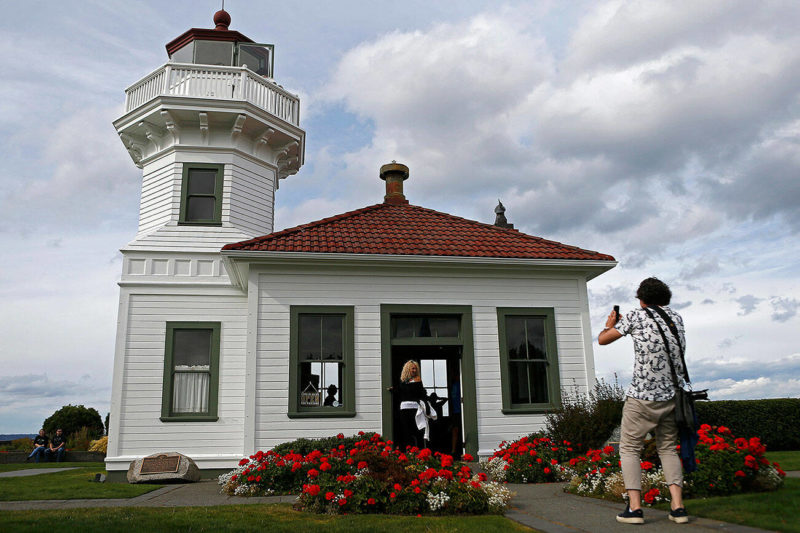
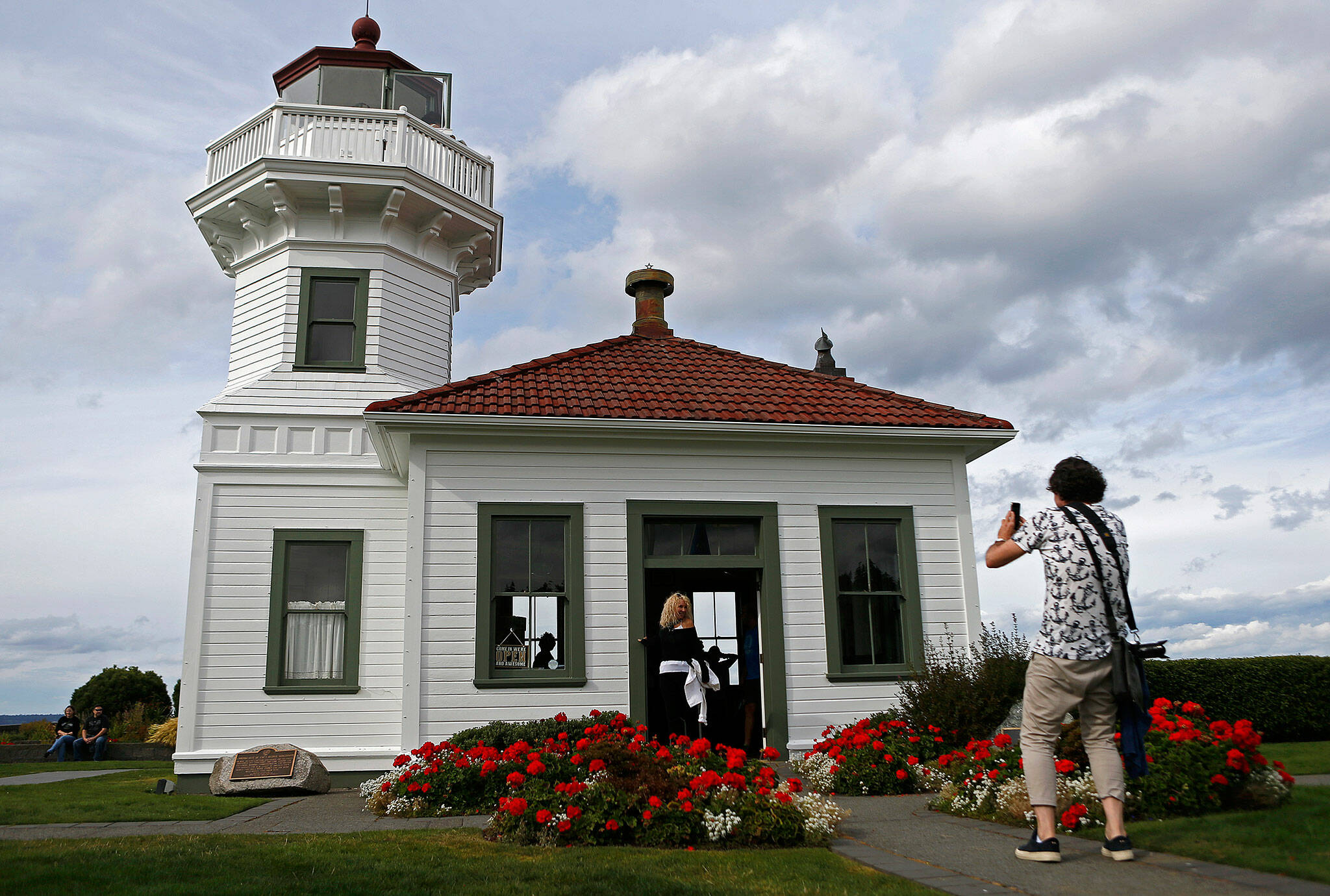
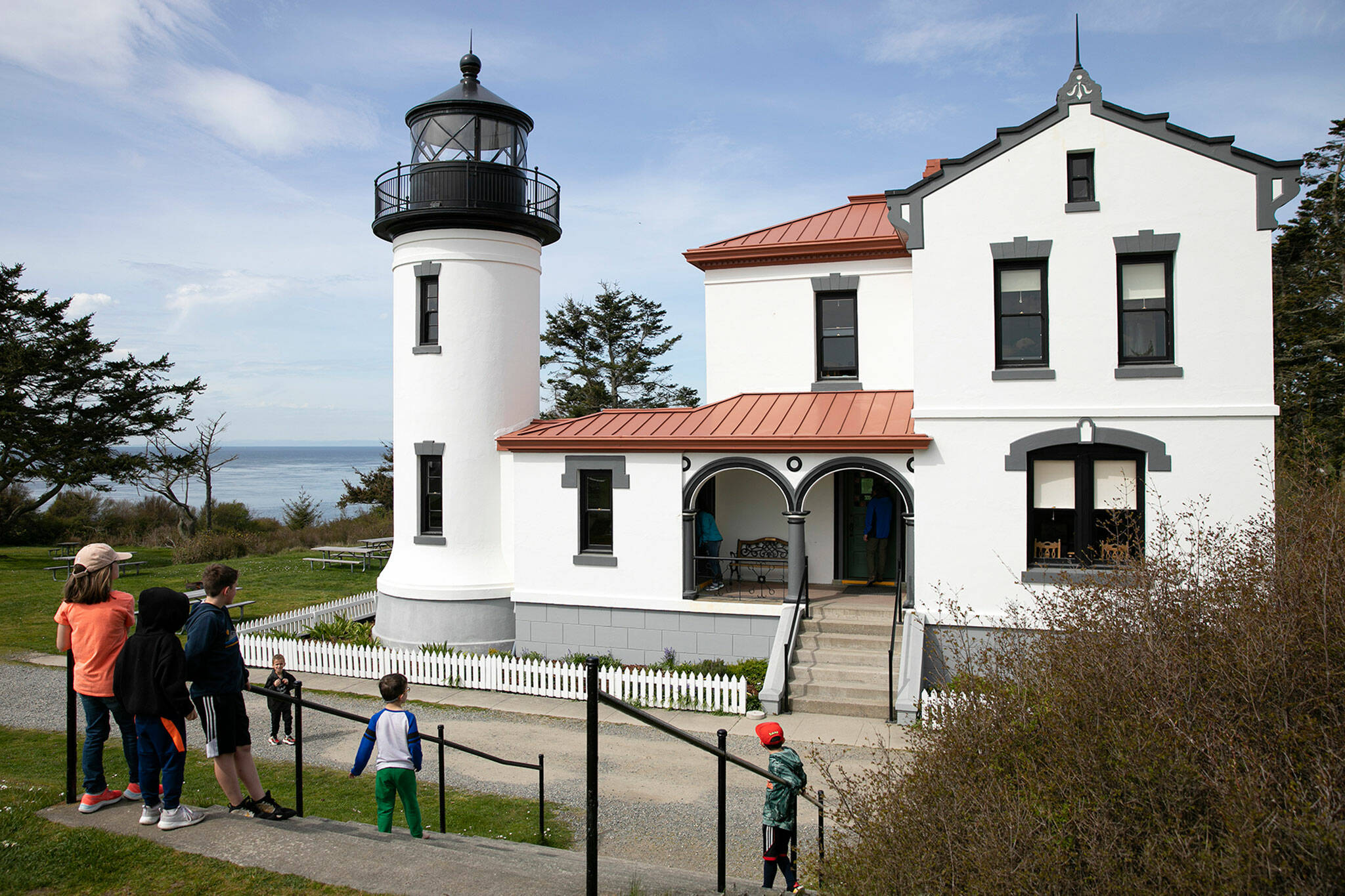
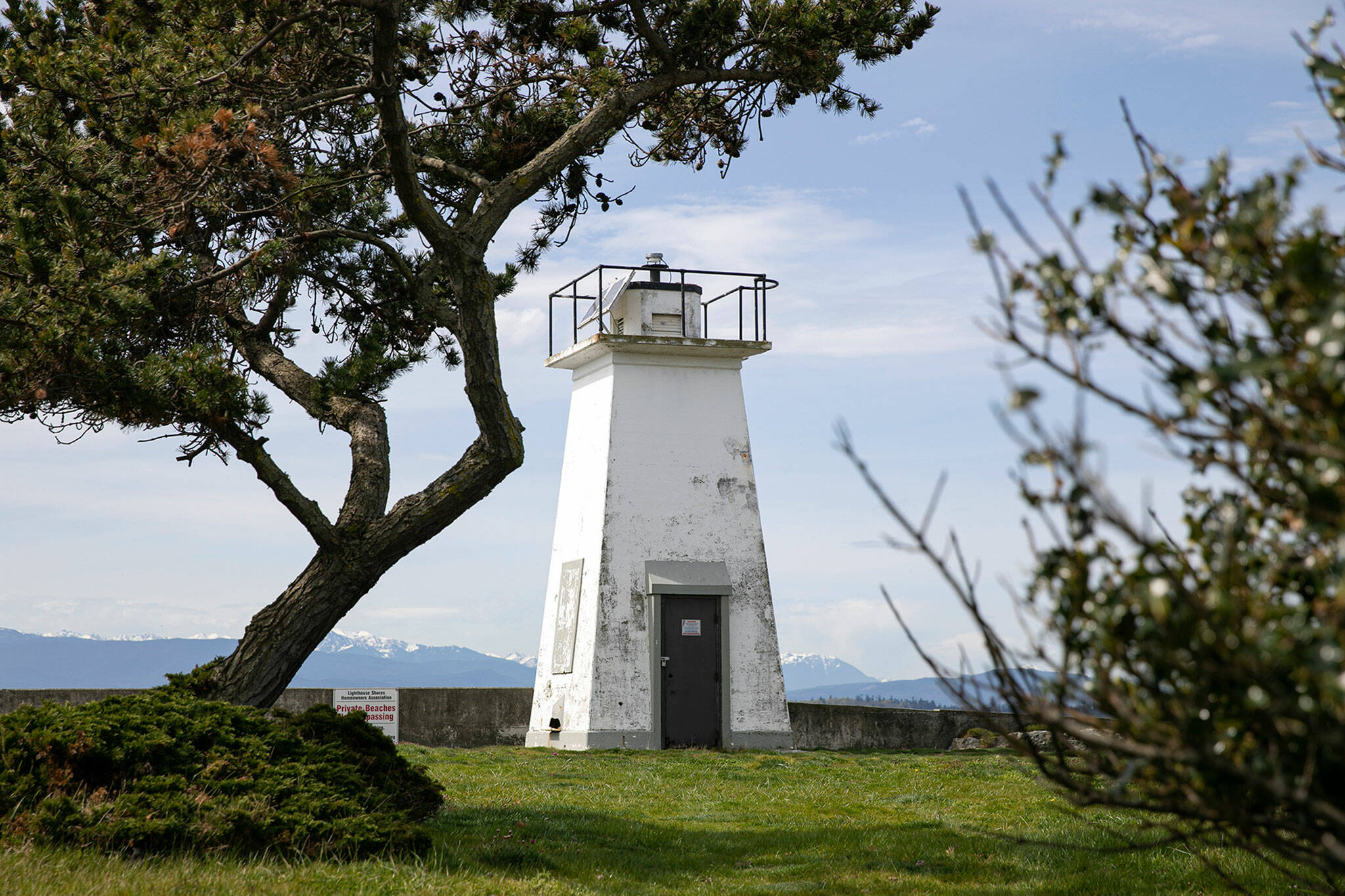
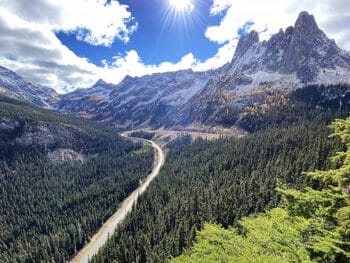








 Speed will be reduced on Radium Hill to avoid bighorn sheep mortalities
Speed will be reduced on Radium Hill to avoid bighorn sheep mortalities